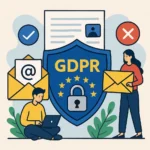Now Reading: Why 80% of Sellers Fail: How to Price Digital Products for Maximum Profit
-
01
Why 80% of Sellers Fail: How to Price Digital Products for Maximum Profit
Why 80% of Sellers Fail: How to Price Digital Products for Maximum Profit

Have you been struggling to figure out how to price digital products for maximum profit? Most creators either price too low, making their products look cheap, or price too high without demonstrating enough value, scaring potential buyers away.
After years of trial and error, I’ve discovered that the secret to profitable digital product pricing isn’t just about numbers-it’s about understanding value. In this comprehensive guide, I’ll share exactly how to price your digital products to maximize profits while keeping your customers happy.
Key Takeaways
- Value-based pricing is the most profitable strategy for digital products-charge based on the outcome your product delivers, not just your effort or competitor prices
- Tiered pricing options can increase your average order value and reach different customer segments
- Digital product pricing benchmarks: mini-courses ($47-$147), flagship courses ($1,000-$3,000), ebooks ($7-$27), templates ($5-$50)
- Test different price points and gather customer feedback to optimize your pricing strategy over time
- Bundle complementary products to increase perceived value and justify higher prices
Understanding Digital Product Pricing Fundamentals
When it comes to how to price digital products for maximum profit, the first thing to understand is that digital products are fundamentally different from physical goods. Unlike physical products, digital products don’t have inventory costs or production expenses for each additional sale. Once I create an ebook, online course, or template, I can sell it an unlimited number of times without additional costs.
This unique characteristic means that pricing isn’t about covering expenses-it’s about determining how much someone is willing to pay for the transformation your product provides. The factors that actually determine the right price include:
- The value of the outcome to the buyer-Does your product help them make money, save time, or solve a significant problem?
- Your target audience-Beginners typically won’t pay as much as professionals or businesses
- Competitive landscape-What others are charging (but don’t just match their prices)
The biggest mistake I see creators make is pricing based on effort rather than results. Just because you spent months creating something doesn’t mean customers will pay more for it. Buyers don’t care about your time investment-they care about the results they’ll get.
Useful Articles:
The Best Pricing Models For Digital Products
After trying numerous pricing strategies, I’ve found these models to be the most effective for maximizing profits from digital products.
Value-Based Pricing
Value-based pricing is the most profitable approach for digital products. This strategy sets prices according to the estimated value your product delivers to customers, not based on production costs or competitor pricing.
For example, if I sell a course that teaches freelancers how to land high-paying clients and that skill helps them earn an extra $2,000 per month, I can confidently charge $500-$1,000 for it. The more valuable the transformation, the higher I can price my product.
How to implement value-based pricing:
- Identify the main problem your product solves
- Ask yourself: “How much would someone pay to fix this problem?”
- Price your product based on the result it delivers, not just what competitors charge
According to a study by ResearchGate, value-based pricing is the most suitable approach for companies aiming to optimize profitability. With this model, you emphasize product quality over quantity, which allows you to charge premium prices for truly valuable solutions.
Tiered Pricing
Tiered pricing involves offering multiple price points so buyers can choose the option that fits their budget and needs. This strategy works exceptionally well because most people will select the middle option, increasing your overall revenue.
Example of effective tiered pricing:
- Basic: $49 – Ebook only
- Standard: $199 – Ebook + Video Course
- Premium: $499 – Ebook + Video Course + 1:1 Coaching
The beauty of tiered pricing is that I can make more money without creating entirely new products. Instead of offering discounts, I add more value to the higher-priced tiers, which justifies the price increase and gives customers options based on their needs and budget.
Bundle Pricing
Product bundle pricing is another clever strategy for increasing your order value. By grouping complementary products together, you can offer more value to customers while increasing your average sale price.
Benefits of bundle pricing:
- Works well for time-sensitive campaigns
- Increases your average order value and sales volume
- Attracts more buyers
- Enables you to upsell complementary products
For example, if you sell digital templates, you might bundle several related designs together at a slightly discounted rate compared to buying each individually. This creates a win-win situation where customers get more value, and you make more per transaction.
Discount Pricing
Discount pricing involves setting prices above the market average and then offering occasional discounts or sales. This strategy works because higher-priced digital products translate into higher-value customers and therefore more money.
To make this strategy effective, you could:
- Combine it with freebies or bonus gifts to make expensive purchases feel worthwhile
- Run special sales with temporarily reduced prices to sell in higher volumes
- Use the discount to increase the perceived value of your products
The psychology behind this approach is powerful-an expensive item at a discounted price is much more appealing than a regularly low-priced item, even if the final price is the same.
Freemium Model
The freemium model offers a free version of your product with the option to upgrade to premium features for a fee. This approach works well for certain digital products like software, apps, and memberships, but not for others like standalone courses.
While freemium can help you attract a large audience and build trust, it requires a solid strategy for converting free users to paying customers. The free version must provide enough value to demonstrate your expertise while holding back premium features that users will want to pay for.
How To Set The Right Price For Your Digital Product
Now that we’ve covered the best pricing models, let’s dive into the practical steps for determining the optimal price for your digital product.
Step 1: Understand Your Market
Start by researching similar digital products in your niche to identify:
- Common price points
- Pricing strategies (one-time fees, subscriptions, payment plans, etc.)
- Value propositions offered by competitors
This research provides benchmarks and helps you position your products effectively in the market. Don’t just copy competitor prices-understand what they’re offering and how you can differentiate your product.
Step 2: Calculate Your Costs
Even though digital products don’t have per-unit costs, you should still account for:
- Time spent creating the product
- Software or tools used in production
- Marketing and advertising expenses
- Platform fees or transaction costs
- Ongoing maintenance or updates
Understanding your costs ensures that your pricing strategy will be profitable in the long run, even if you’re primarily using value-based pricing.
Step 3: Consider Your Audience
Different audiences have different price sensitivities and expectations. Consider:
- Who you’re selling to-Professionals and businesses can typically afford higher prices than hobbyists or beginners
- The problem you’re solving-The more urgent or important the problem, the more people will pay to solve it
- Your audience’s income level-Match your pricing to what your target audience can reasonably afford
For example, a digital product teaching businesses how to save $10,000 in taxes can command a much higher price than a product teaching students how to save money on groceries.
Step 4: Package Your Products Strategically
How you present your digital products significantly impacts how your audience perceives their value. Consider these packaging approaches:
Individual Products:
Offer products separately to give customers flexibility and a lower entry point. This works well for specific, focused content like standalone courses or downloads.
Bundles:
Create thoughtfully grouped product bundles that offer a complete experience or solve a bigger problem. These curated offers increase perceived value and encourage customers to spend more.
For example, pairing a course with coaching and a community access can create a more immersive learning journey and justify a higher price point.
Step 5: Use Pricing Psychology
Strategic use of pricing psychology can significantly impact your sales:
Charm pricing:
Prices ending in 9 or 7 (like $97 instead of $100) are perceived as significantly lower and can increase sales.
Prestige pricing:
Round numbers (like $100 or $500) can work better for premium products as they’re easier to process and can signal quality.
Anchoring:
Present a higher-priced option first to make your target price seem more reasonable by comparison.
Urgency and scarcity:
Limited-time offers or limited availability can motivate faster purchasing decisions and justify higher prices.
Step 6: Test and Iterate
Pricing isn’t a set-it-and-forget-it decision. The most successful digital product creators regularly test different price points and gather customer feedback.
Methods for testing prices:
- A/B testing different price points with similar audiences
- Surveying customers about perceived value
- Analyzing conversion rates at different price points
- Monitoring competitor pricing changes
Use the data from these tests to refine your pricing strategy over time. What works today might not work tomorrow as markets and customer expectations evolve.
Useful Articles:
Digital Product Pricing Benchmarks
To help you gauge where your products should fall on the pricing spectrum, here are some common benchmarks for different types of digital products:
- Mini online courses with 4-10 training videos typically sell for $47 to $147, with an average price of $137
- Flagship online courses with comprehensive content including videos, photos, audio, and PDF extras tend to sell for between $1,000 and $3,000
- Informational ebooks range from $7 to $27 depending on the subject and length
- Software templates (like Canva or Notion templates) can be sold for between $5 and $50
- Mobile apps often use freemium or subscription models, with subscriptions typically ranging from $0.99 to $9.99 per month
- Digital art has a wide range of price points depending on your reputation as a creator, but most falls between $5 and $250
Remember that these are just averages. The right price for your specific digital product depends on its unique value proposition and your target audience.
Common Pricing Mistakes To Avoid
When figuring out how to price digital products for maximum profit, be careful to avoid these common pitfalls:
Underpricing Your Products
Many creators, especially beginners, significantly underprice their digital products. This not only leaves money on the table but can actually hurt sales by making your product seem less valuable.
Signs you’re underpricing:
- Customers rarely question your prices
- You’re selling high volumes but profits are still low
- Your prices are significantly lower than competitors with similar offerings
- You feel uncomfortable or apologetic about your prices
Remember that higher prices often translate to higher-value customers who are more committed to getting results from your product.
Focusing Only On Competitor Prices
While it’s important to know what competitors charge, simply matching or slightly undercutting their prices is rarely the best strategy. Instead:
- Focus on differentiating your product
- Highlight your unique value proposition
- Add bonuses or features competitors don’t offer
- Target a specific segment of the market with specialized content
Your goal should be to make your product stand out rather than compete solely on price.
Neglecting To Communicate Value
One of the biggest mistakes is failing to clearly communicate the value of your digital product. No matter how good your pricing strategy is, customers won’t buy if they don’t understand why your product is worth the price.
How to effectively communicate value:
- Focus on outcomes and results, not just features
- Use testimonials and case studies to demonstrate real-world impact
- Clearly explain how your product solves specific problems
- Quantify benefits whenever possible (e.g., “save 5 hours per week” or “increase revenue by 20%”)
The more effectively you communicate value, the higher the price customers will be willing to pay.
Forgetting About Upsells And Cross-Sells
Many digital product creators focus solely on their main product pricing without considering the entire customer journey. Strategic upsells and cross-sells can significantly increase your average order value and overall profitability.
Consider creating a suite of complementary products at different price points that solve related problems for your audience. This allows you to capture additional revenue from existing customers who already trust you.
Useful Articles:
Optimizing Your Pricing For Different Platforms
Different selling platforms have different audience expectations and competitive landscapes. Here’s how to optimize your pricing based on where you’re selling:
Your Own Website
Selling directly through your own website gives you the most control over pricing and the highest profit margins since you don’t have to pay marketplace fees. This is often the best place to implement premium pricing strategies and custom packages.
Tips for website pricing:
- Create detailed sales pages that thoroughly explain your product’s value
- Offer exclusive bundles or bonuses not available elsewhere
- Implement tiered pricing options
- Use testimonials and social proof prominently
Marketplaces (Etsy, Creative Market, etc.)
Marketplace platforms often have more price-sensitive customers who are comparing multiple options. Your pricing strategy needs to account for platform fees while remaining competitive.
Tips for marketplace pricing:
- Research the platform’s average prices for similar products
- Factor in marketplace fees (typically 15-30%) when setting prices
- Use premium thumbnails and descriptions to stand out
- Offer unique products that face less direct competition
Course Platforms (Udemy, Skillshare, etc.)
Each course platform has its own pricing norms and audience expectations. For example, Udemy frequently runs sales with deep discounts, while platforms like Teachable allow you to maintain higher, more consistent pricing.
Tips for course platform pricing:
- Understand each platform’s pricing structure and limitations
- Consider how platform-initiated discounts will affect your bottom line
- Use platform-specific features to increase perceived value
- Create platform-exclusive content when appropriate
Communicating Price Increases To Existing Customers
As your digital products evolve and provide more value, you may need to increase prices. Here’s how to do it effectively:
- Give advance notice of the price increase to existing customers
- Explain the added value that justifies the new price
- Offer a limited-time opportunity to purchase at the current price before the increase
- Consider grandfathering existing customers at their original price
- Provide exclusive bonuses to loyal customers who stay with you through the price change
When communicated properly, price increases can actually increase customer loyalty by reinforcing the growing value of your products.
Learning how to price digital products for maximum profit is both an art and a science. The most successful strategy is value-based pricing-charging based on the transformation your product delivers rather than just your costs or competitor prices. By understanding your audience, communicating value effectively, and testing different approaches, you can find the sweet spot that maximizes both profits and customer satisfaction.





















